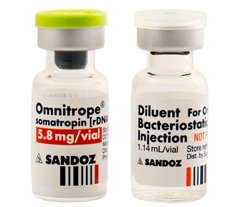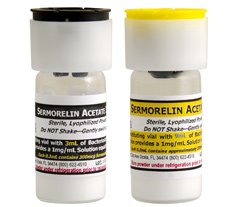Progesterone Levels by Age Chart
 Unlike testosterone or other hormones that have varying blood levels that are highly dependent on one’s age, progesterone levels in women are more focused on the time of the month based on her menstrual cycle, and menopause. We will discuss progesterone levels in men in the final section of this report.
A blood test is the most accurate method of assessing one’s progesterone and other hormone levels. This test is traditionally carried out first thing in the morning before the individual consumes any food. When checking progesterone levels in females, the woman must not use her oral contraceptives for the previous 24 hours, and must have completed her ovulation for the current menstrual cycle. Your doctor can guide you on the best way to avoid contraception use for this testing.
The progesterone levels by age chart displayed in each of the following two sections will cover childhood through adulthood, with the primary focus for women centering around the monthly cycle. Because a significant purpose of progesterone is the preparation of the uterine lining for the fertilized egg, you will notice how the spike in progesterone levels occurs after ovulation. You will also see how slight the difference in men can be in later years – but this will also explain how a decline can create unwanted health issues.
Unlike testosterone or other hormones that have varying blood levels that are highly dependent on one’s age, progesterone levels in women are more focused on the time of the month based on her menstrual cycle, and menopause. We will discuss progesterone levels in men in the final section of this report.
A blood test is the most accurate method of assessing one’s progesterone and other hormone levels. This test is traditionally carried out first thing in the morning before the individual consumes any food. When checking progesterone levels in females, the woman must not use her oral contraceptives for the previous 24 hours, and must have completed her ovulation for the current menstrual cycle. Your doctor can guide you on the best way to avoid contraception use for this testing.
The progesterone levels by age chart displayed in each of the following two sections will cover childhood through adulthood, with the primary focus for women centering around the monthly cycle. Because a significant purpose of progesterone is the preparation of the uterine lining for the fertilized egg, you will notice how the spike in progesterone levels occurs after ovulation. You will also see how slight the difference in men can be in later years – but this will also explain how a decline can create unwanted health issues.
Progesterone Levels in Women
The normal progesterone levels in a woman will vary during the course of her monthly cycle. During the luteal phase, a premenopausal woman will have normal progesterone levels between 7 and 38 ng/mL. This can drop to .03 to .3 ng/mL by the time she reaches menopause. In fact, in most cases progesterone is all but gone by the time a woman is in postmenopause. Here is the average lifecycle progesterone reference for females:- 5 to 9 years of age: 0.6 ng/mL
- 10 to 13 years of age: 10.2 ng/mL
- 14 to 17 years of age: 11.9 ng/mL
- Early follicular phase: 0.6 ng/mL
- Late follicular phase: 14.5 ng/mL
- Luteal phase: 31.4 ng/mL
- Mid-cycle: 16.1 ng/mL
- Postmenopausal: 0.2 ng/mL
Get Started
Progesterone Levels in Men
Maintaining proper progesterone levels in men is crucial. Progesterone is the source hormone for testosterone – often considered to be the most essential of all hormones for males. The chart below will show how progesterone levels decline as men age. This correlates with the fact that testosterone levels also drop. Unfortunately, these reductions in chemical production often accompany a rise in male estradiol or estrogen levels. Progesterone protects the body from an abundance of estrogen that can lead to weight gain and lower libido. When progesterone levels decline, a man will often find himself retaining excess fat in his midsection. Here is the average normal progesterone level that a male should see:- 5 to 9 years of age: 0.7 ng/mL
- 10 to 13 years of age: 1.2 ng/mL
- 14 to 17 years of age: <0.8 ng/mL
- 18 to 29 years of age: 0.3 ng/mL
- 30 years of age and older: 0.2 ng/mL




















